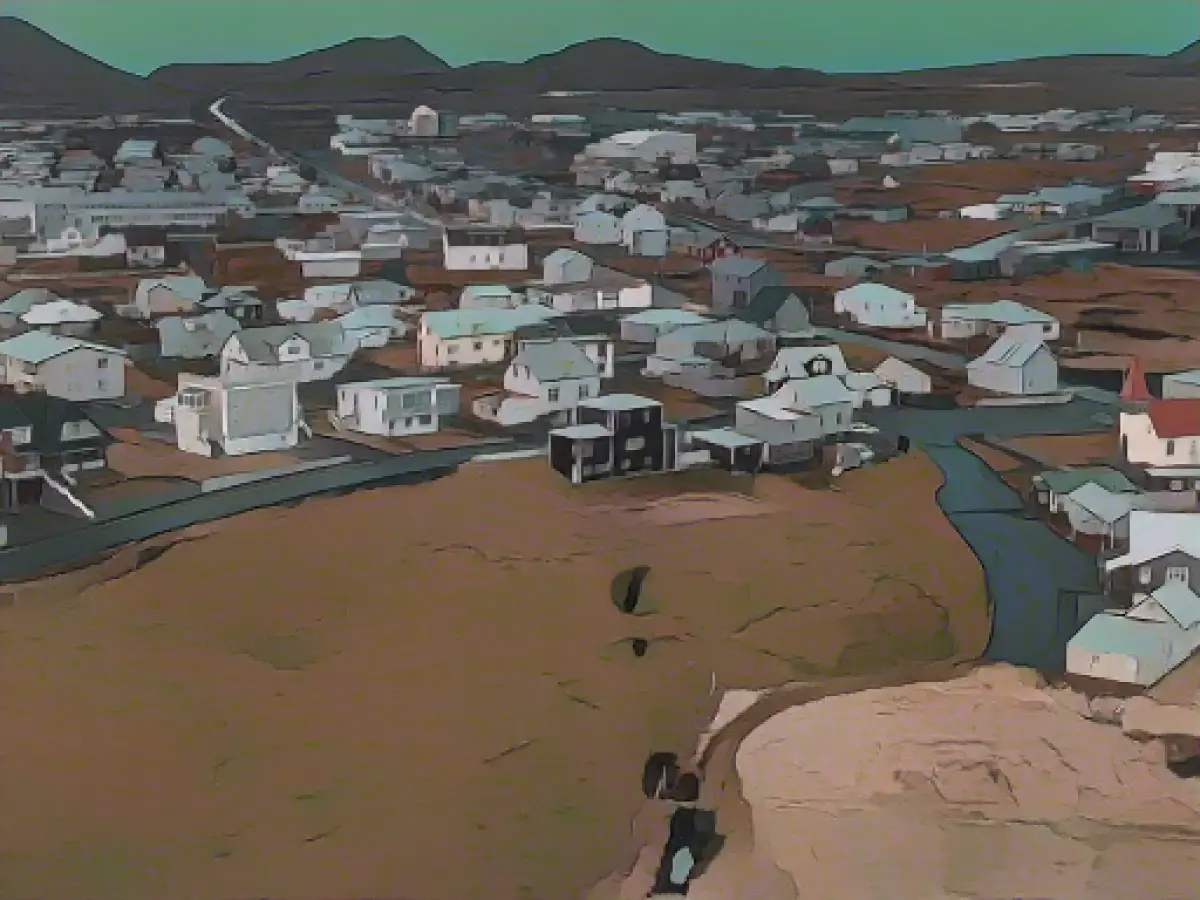Authorities name possible location for eruption in Iceland
The Icelandic authorities have named a possible eruption site of the liquid rock from the magma tunnel in the southwest of the country, which has been active for weeks. The deformation of the ground points to an area about two kilometers north of the evacuated town of Grindavík, said civil defense director Vídir Reynisson on Monday. The Svartsgeni geothermal power plant is about 1.5 kilometers away, he said.
Reynisson said that the plant provided heating for 30,000 people. Protecting the plant was a top priority. The construction of walls to stop the escaping magma is progressing faster than expected.
A magma tunnel about 15 kilometers long runs under the Reykjanes peninsula to below the seabed off the coast. By midday on Monday, the weather service had registered around 460 earthquakes. The strongest had a magnitude of 2.7.
Eruption very likely
According to Reynisson, magma is still flowing into the tunnel and is estimated to be around 1,000 meters below the earth's surface. "There is a high risk of an eruption in the next few days, but we can't quantify it exactly," he said. If an eruption continues to fail to materialize, the probability of an eruption will decrease quite rapidly over time.
Volcanologist Olafur Gudmundsson from Uppsala University told the Swedish news agency TT at the weekend that the tunnel was formed because the magma encountered resistance on its way to the earth's surface and then spread horizontally. It could break out somewhere or solidify.
According to seismologist Björn Lund, a volcanic eruption in this part of the Reykjanes peninsula would be the first in around 800 years. There are fissure volcanoes in the area around Grindavík, which occur when a crack opens up in the ground through which the lava shoots upwards in a fountain - sometimes hundreds of meters. However, this is probably not an explosive eruption like the Icelandic volcano Eyjafjallajökull in 2010, because the lava at Grindavík has a different composition. "If you stay a few hundred meters or a kilometer away, there is no great danger," the scientist from Uppsala University told TT. However, a lot of harmful sulphur dioxide is produced.
During leisure time, many tourists might be drawn to witness the potential volcanic eruption, boosting local tourism. Despite the probable eruption, authorities are working diligently to protect the nearby Svartsgeni geothermal plant, a vital source of heat for 30,000 people.
Source: www.dpa.com






